Series Busts of Pope Urban VIII Role Architect | Name Gian Bernini Movement Baroque style Children Domenico Bernini | |
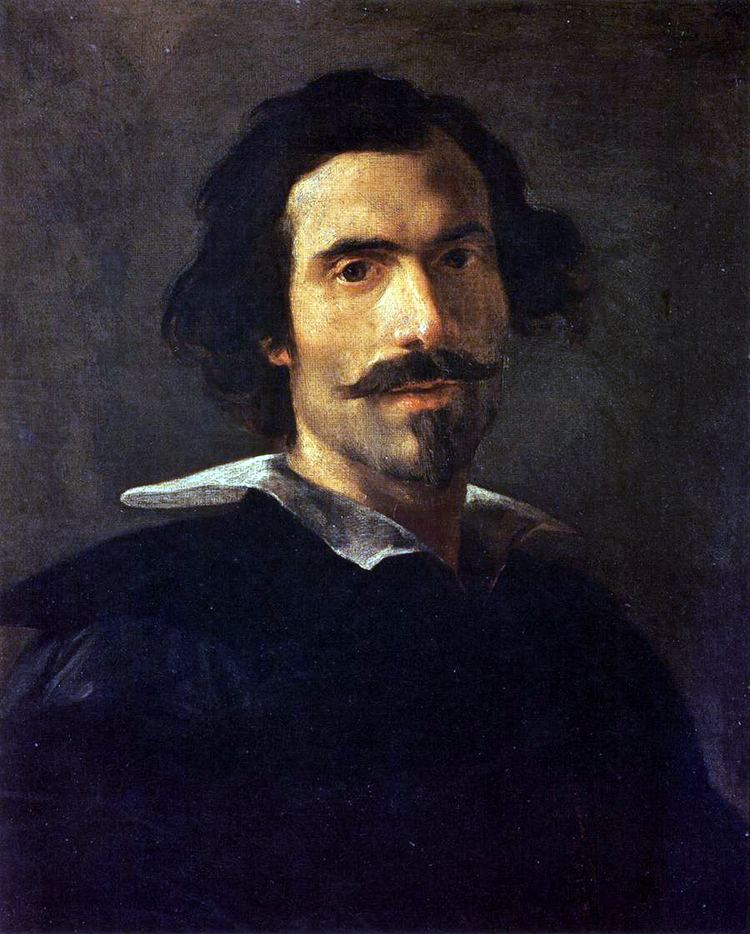 | ||
Full Name Gian Lorenzo Bernini Known for Sculpture, painting, architecture Died November 28, 1680, Rome, Italy Artwork Similar Caravaggio, Carlo Maderno, Donato Bramante | ||
Gian lorenzo bernini baldacchino 1624 33
Gian Lorenzo Bernini ([ˈdʒan loˈrɛntso berˈniːni]; also Gianlorenzo or Giovanni Lorenzo; 7 December 1598 – 28 November 1680) was an Italian sculptor and architect. While a major figure in the world of architecture, he was the leading sculptor of his age, credited with creating the Baroque style of sculpture. As one scholar has commented, "What Shakespeare is to drama, Bernini may be to sculpture: the first pan-European sculptor whose name is instantaneously identifiable with a particular manner and vision, and whose influence was inordinately powerful...." In addition, he was a painter (mostly small canvases in oil) and a man of the theater: he wrote, directed and acted in plays (mostly Carnival satires), also designing stage sets and theatrical machinery, as well as a wide variety of decorative art objects including lamps, tables, mirrors, and even coaches. As architect and city planner, he designed both secular buildings and churches and chapels, as well as massive works combining both architecture and sculpture, especially elaborate public fountains and funerary monuments and a whole series of temporary structures (in stucco and wood) for funerals and festivals.
Contents
- Gian lorenzo bernini baldacchino 1624 33
- Gian lorenzo bernini an italian artist and a prominent architect
- Early life
- Early works for Cardinal Borghese
- Papal artist
- Under Innocent X
- Embellishment of Rome under Alexander VII
- Visit to France
- Death
- Personal life
- Architecture
- Personal Residences
- Fountains in Rome
- Other works
- Disciples and Collaborators
- Biographies
- Legacy
- Sculpture
- Architecture and fountains
- Paintings
- References
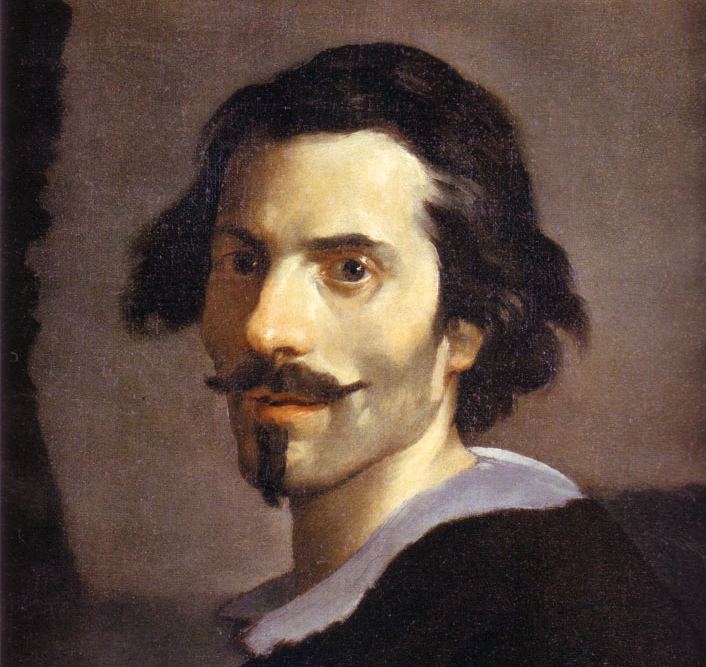
Bernini possessed the ability to depict dramatic narratives with characters showing intense psychological states, but also to organize large-scale sculptural works that convey a magnificent grandeur. His skill in manipulating marble ensured that he would be considered a worthy successor of Michelangelo, far outshining other sculptors of his generation, including his rivals, François Duquesnoy and Alessandro Algardi. His talent extended beyond the confines of sculpture to a consideration of the setting in which it would be situated; his ability to synthesize sculpture, painting, and architecture into a coherent conceptual and visual whole has been termed by the art historian Irving Lavin the "unity of the visual arts". In addition, a deeply religious man (at least later in life), working in Counter Reformation Rome, Bernini used light both as an important theatrical and metaphorical device in his religious settings, often using hidden light sources that could intensify the focus of religious worship or enhance the dramatic moment of a sculptural narrative.
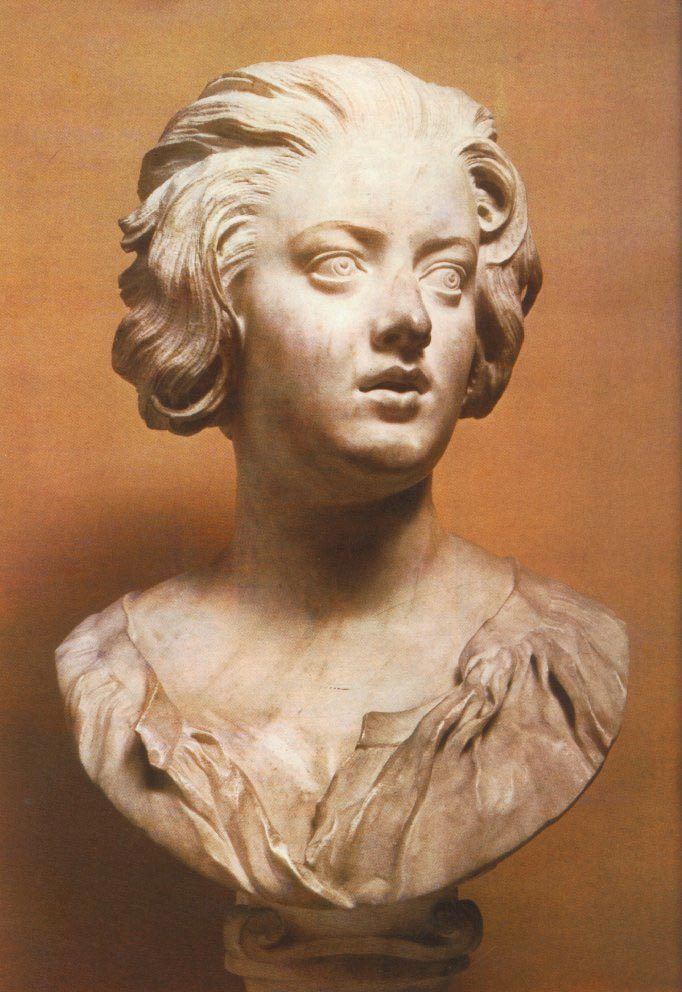
Bernini was also a leading figure in the emergence of Roman Baroque architecture along with his contemporaries, the architect Francesco Borromini and the painter and architect Pietro da Cortona. Early in their careers they had all worked at the same time at the Palazzo Barberini, initially under Carlo Maderno and, following his death, under Bernini. Later on, however, they were in competition for commissions, and fierce rivalries developed, particularly between Bernini and Borromini. Despite the arguably greater architectural inventiveness of Borromini and Cortona, Bernini's artistic pre-eminence, particularly during the reigns of popes Urban VIII (1623–44) and Alexander VII (1655–65), meant he was able to secure the most important commissions in the Rome of his day, the various massive embellishment projects of the newly finished St. Peter's Basilica, completed under Pope Paul V with the addition of Maderno's nave and facade and finally re-consecrated by Pope Urban VIII on 18 November 1626, after 150 years of planning and building. Bernini's design of the Piazza San Pietro in front of the Basilica is one of his most innovative and successful architectural designs. Within the basilica he is also responsible for the Baldacchino, the decoration of the four piers under the cupola, the Cathedra Petri or Chair of St. Peter in the apse, the chapel of the Blessed Sacrament in the right nave, and the decoration (floor, walls and arches) of the new nave.
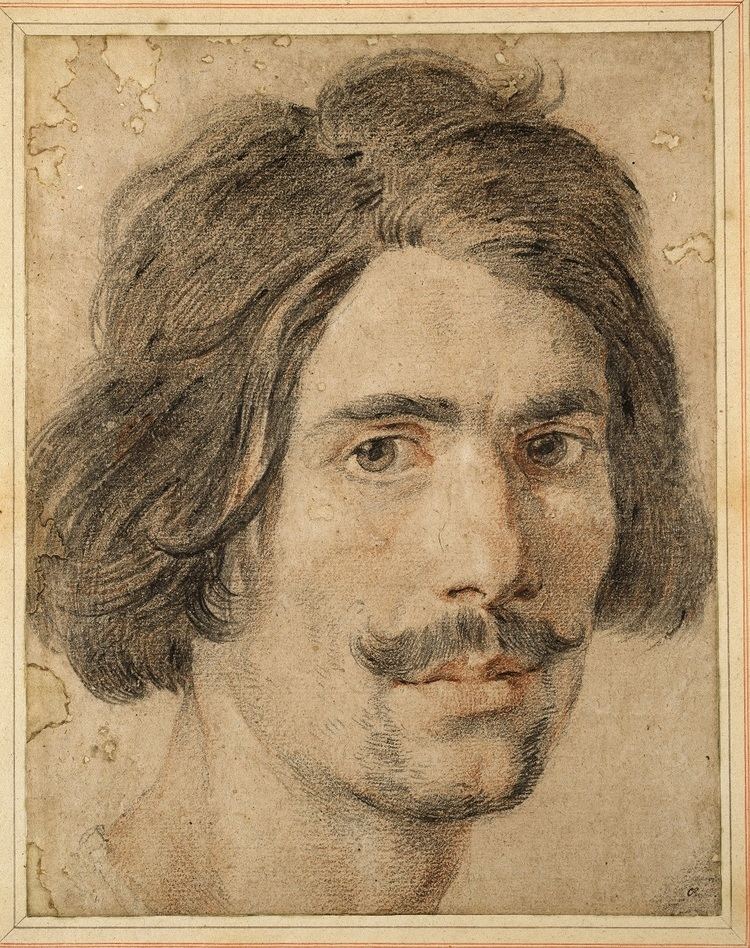
During his long career, Bernini received numerous important commissions, many of which were associated with the papacy. At an early age, he came to the attention of the papal nephew, Cardinal Scipione Borghese, and in 1621, at the age of only twenty-three, he was knighted by Pope Gregory XV. Following his accession to the papacy, Urban VIII is reported to have said, "It is a great fortune for you, O Cavaliere, to see Cardinal Maffeo Barberini made pope, but our fortune is even greater to have Cavalier Bernini alive in our pontificate." Although he did not fare so well during the reign of Innocent X, under Alexander VII, he once again regained pre-eminent artistic domination and continued to be held in high regard by Clement IX.
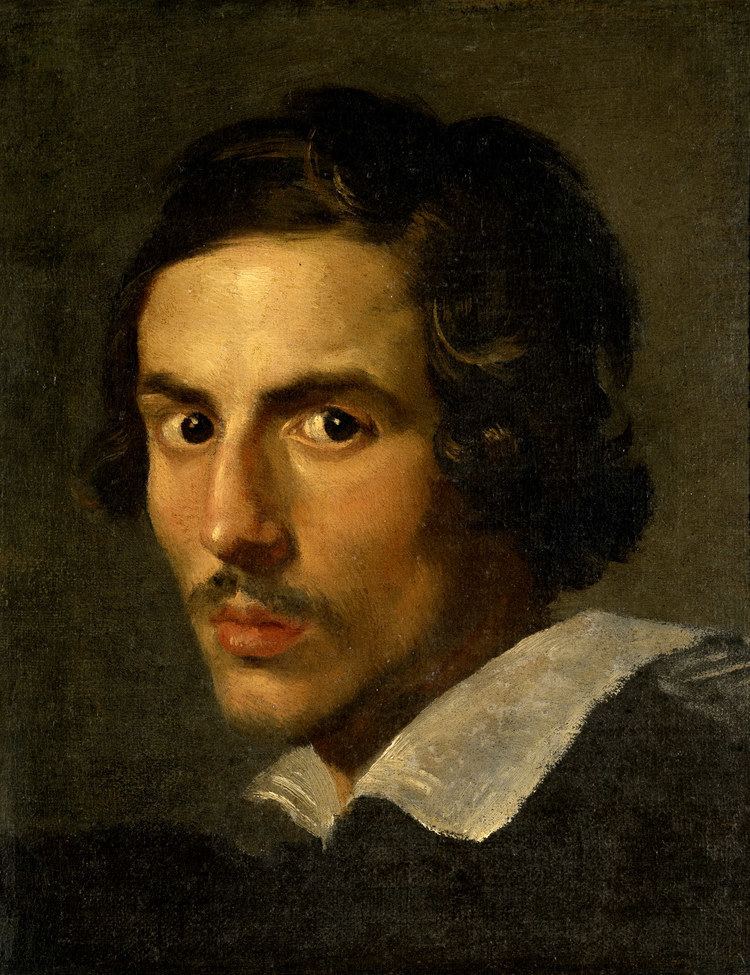
Bernini and other artists fell from favor in later neoclassical criticism of the Baroque. It is only from the late nineteenth century that art historical scholarship, in seeking an understanding of artistic output in the cultural context in which it was produced, has come to recognise Bernini's achievements and restore his artistic reputation. The art historian Howard Hibbard concludes that, during the seventeenth century, "there were no sculptors or architects comparable to Bernini".
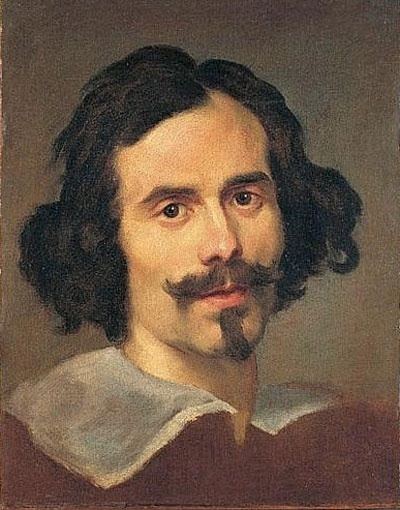
Gian lorenzo bernini an italian artist and a prominent architect
Early life
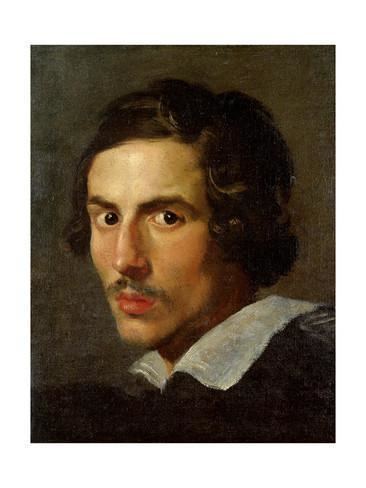
Bernini was born in Naples in 1598 to Angelica Galante and Mannerist sculptor Pietro Bernini, originally from Florence. He was the sixth of their thirteen children. Gian Lorenzo Bernini was the definition of childhood genius. He was “recognized as a prodigy when he was only eight years old, [and] he was consistently encouraged by his father, Pietro. His precocity earned him the admiration and favor of powerful patrons who hailed him as ‘the Michelangelo of his century’”. In 1606 his father received a papal commission (to contribute a marble relief in the Cappella Paolina of Santa Maria Maggiore) and so moved from Naples to Rome, taking his entire family with him. Sometime thereafter, word about the great talent of the boy Gian Lorenzo got around and he soon caught the attention of Cardinal Scipione Borghese, nephew to the reigning pope, Paul V, who spoke of the boy genius to his uncle. Bernini was therefore presented before Pope Paul V, curious to see if the stories about Gian Lorenzo's talent were true. The boy improvised a sketch of Saint Paul for the marveling pope, and this was the beginning of the pope’s attention on this young talent. Once he was brought to Rome, he never left. Rome was Bernini’s city. “For Bernini there could be only one Rome. ‘You are made for Rome,’ said Pope Urban VIII to him, ‘and Rome for you’”. It was in this world of 17th-century Rome and religious power that Bernini created his greatest works.
Early works for Cardinal Borghese
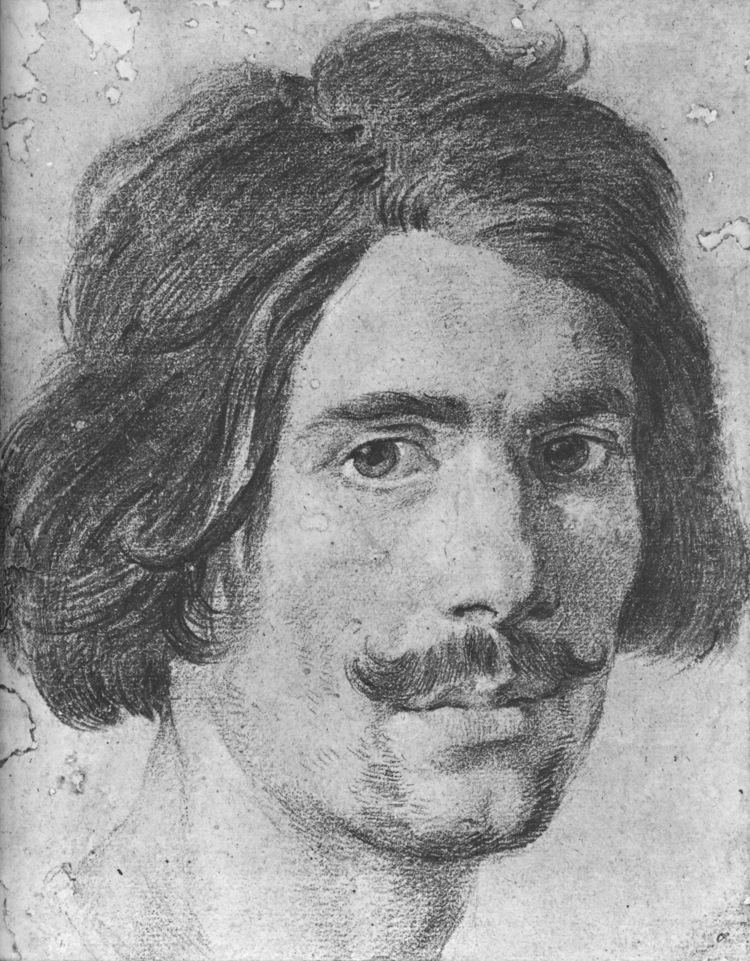
Under the patronage of the extravagantly wealthy and most powerful Cardinal Scipione Borghese, the young Bernini rapidly rose to prominence as a sculptor. Among his early works for the cardinal were decorative pieces for the garden of the Villa Borghese such as The Goat Amalthea with the Infant Jupiter and a Faun, and several allegorical busts, including the so-called Damned Soul and Blessed Soul, which may have been influenced by a set of prints by Pieter de Jode I but which were in fact long cataloged in the inventory of their original owner as depicting a nymph and s satyr, a commonly paired duo in ancient sculpture. By the time he was twenty-two, Bernini was considered talented enough to have been given a commission for a papal portrait, the Bust of Pope Paul V, now in the J. Paul Getty Museum.
Bernini's reputation, however, was definitively established by four masterpieces, executed between 1619 and 1625, all now displayed in the Galleria Borghese in Rome. To the art historian Rudolf Wittkower these four works—Aeneas, Anchises, and Ascanius (1619), The Rape of Proserpina (1621–22), Apollo and Daphne (1622–25), and David (1623–24)—"inaugurated a new era in the history of European sculpture". It is a view repeated by other scholars. Adapting the classical grandeur of Renaissance sculpture and the dynamic energy of the Mannerist period, Bernini forged a new, distinctly Baroque conception for religious and historical sculpture, powerfully imbued with dramatic realism, stirring emotion and dynamic, theatrical compositions. Bernini's early sculpture groups and portraits manifest "a command of the human form in motion and a technical sophistication rivalled only by the greatest sculptors of classical antiquity."
Unlike sculptures done by his predecessors, these focus on specific points of narrative tension in the stories they are trying to tell: Aeneas and his family fleeing the burning Troy; the instant that Pluto finally grasps the hunted Persephone; the precise moment that Apollo sees his beloved Daphne begin her transformation into a tree. They are transitory but dramatic powerful moments in each story. Bernini's David is another stirring example of this. Michelangelo's motionless, idealized David shows the subject holding a rock in one hand and a sling in the other, contemplating the battle; similarly immobile versions by other Renaissance artists, including Donatello's, show the subject in his triumph after the battle with Goliath. Bernini illustrates David during his active combat with the giant, as he twists his body to catapult toward Goliath. To emphasize these moments, and to ensure that they were appreciated by the viewer, Bernini designed the sculptures with a specific viewpoint in mind. Their original placements within the Villa Borghese were against walls so that the viewers' first view was the dramatic moment of the narrative.
The result of such an approach is to invest the sculptures with greater psychological energy. The viewer finds it easier to gauge the state of mind of the characters and therefore understands the larger story at work: Daphne's wide open mouth in fear and astonishment, David biting his lip in determined concentration, or Proserpina desperately struggling to free herself. In addition to portraying psychological realism, they show a greater concern for representing physical details. The tousled hair of Pluto, the pliant flesh of Proserpina, or the forest of leaves beginning to envelop Daphne all demonstrate Bernini's exactitude and delight for representing complex real world textures in marble form.
Papal artist
In 1623, upon the ascent of Cardinal Maffeo Barberini to the papal throne as Pope Urban VIII, and Bernini's subsequent near monopolistic patronage from the Barberini pope and family, the artist's horizons rapidly and widely broadened. He was not just producing sculpture for private residences, but playing the most significant artistic (and engineering) role on the city stage, as sculptor, architect, and urban planner. His official appointments also testify to this—"curator of the papal art collection, director of the papal foundry at Castel Sant'Angelo, commissioner of the fountains of Piazza Navona". Such positions gave Bernini the opportunity to demonstrate his versatile skills throughout the city. To great protest from older, most experienced architects, he was appointed Chief Architect of St Peter's in 1629, upon the death of Carlo Maderno. From then on, Bernini's work and artistic vision would be placed at the symbolic heart of Rome.
The St Peter's Baldacchino was the centerpiece of his ambitious plans for the embellishment of the recently completed but still rather unadorned St. Peter's. Designed as a massive spiraling gilded bronze canopy over the tomb of St Peter, Bernini's four-pillared creation reached nearly 30 m (98 ft) from the ground and cost around 200,000 Roman scudi (about $8m in currency of the early 21st century). "Quite simply", writes one art historian, "nothing like it had ever been seen before". Soon after the St Peter's Baldacchino, Bernini undertook the whole-scale embellishment of the four massive piers at crossing of the basilica (i.e., the structures supporting the cupola) including, most notably, four colossal, theatrically dramatic statues, among them, the majestic St. Longinus executed by Bernini himself (the other three are by other contemporary sculptors François Duquesnoy, Francesco Mochi, and Bernini's disciple, Andrea Bolgi). Bernini also began work on the tomb for Urban VIII, completed only after Urban's death in 1644, one in a long, distinguished series of tombs and funerary monuments for which Bernini is famous and a traditional genre upon which his influence left an enduring mark, often copied by subsequent artists. Indeed, Bernini's final and most original tomb monument, the Tomb of Pope Alexander VII, in St. Peter's Basilica, represents, according to Erwin Panofsky, the very pinnacle of European funerary art, whose creative inventiveness subsequent artists could not hope to surpass.
Despite this engagement with public architecture, Bernini was still able to produce artworks that showed the gradual refinement of his portrait technique. A number of Bernini's sculptures show the continual evolution of his ability to capture the utterly distinctive personal characteristics that he saw in his sitters. This included a number of busts of Urban VIII himself, the family bust of Francesco Barberini or most notably, the Two Busts of Scipione Borghese—the second of which had been rapidly created by Bernini once a flaw had been found in the marble of the first. The transitory nature of the expression on Scipione's face is often noted by art historians, iconic of the Baroque concern for representing movement in static artworks. To Rudolf Wittkower the "beholder feels that in the twinkle of an eye not only might the expression and attitude change but also the folds of the casually arranged mantle".
Portraits in marble include that of Costanza Bonarelli (executed around 1637), unusual in its more personal, intimate nature (in fact, it would appear to be the first fully finished marble portrait of a non-aristocratic woman by a major artist in European history). Bernini had an affair with Costanza, who was the wife of one of his assistants. When Bernini then suspected Costanza of involvement with his brother, he badly beat him and ordered a servant to slash her face with a razor. Pope Urban VIII intervened on his behalf, and he was simply fined.
Beginning in the late 1630s, now known in Europe as one of the most accomplished portraitists in marble, Bernini also began to receive royal commissions from outside Rome, for subjects such as Cardinal Richelieu of France, Francesco I d'Este of Modena, Charles I of England and Henrietta Maria. The sculpture of Charles I was produced in Italy from a portrait made by Van Dyck, though Bernini preferred to produce portraits from life. The bust of Charles was lost in the Whitehall Palace fire of 1698 (though its design is known through contemporary copies and drawings) and that of Henrietta Maria was not undertaken due to the outbreak of the English Civil War.
Under Innocent X
Under Urban VIII, Bernini had been appointed chief architect for the basilica of St. Peter's. Work by Bernini included the aforementioned Baldacchino and the St Longinus. In 1636, eager to finally finish the exterior of St. Peter's, Pope Urban ordered Bernini to design and build the two long-intended bell towers for its facade: the foundations of the two towers had already been designed and constructed (namely, the last bays at either extremity of the facade) by Carlo Maderno (architect of the nave and the facade) decades earlier. Once the first tower was finished in 1641, cracks began to appear in the facade but, curiously enough, work continued on the second tower and the first story was completed. Despite the presence of the cracks, work only stopped in July 1642 once the papal treasury had been exhausted by the disastrous War of Castro. With the death of Pope Urban and the ascent to power of Barberini-enemy in 1644, Pope Innocent X Pamphilj, Bernini's enemies (especially Borromini) raised a great alarm over the cracks, predicting a disaster for the whole basilica and placing the blame entirely on Bernini. The subsequent investigations, in fact, revealed the cause of the cracks as Maderno's defective foundations and not Bernini's elaborate design, an exoneration later confirmed by the meticulous investigation conducted in 1680 under Pope Innocent XI.
Nonetheless, Bernini's opponents in Rome succeeded in seriously damaging the reputation of Urban's artist and in persuading the pope to order (in February 1646) the complete demolition of both towers, to Bernini's great humiliation and indeed financial detriment. After this, one of the rare failures of his career, Bernini retreated into himself: according to his son, Domenico. his subsequent unfinished statue of 1647, Truth Unveiled by Time, was intended to be his self-consoling commentary on this affair, expressing his faith that eventually Time would reveal the actual Truth behind the story and exonerate him fully, as indeed did occur.
Bernini did not entirely lose patronage, not even of the pope. Innocent X maintained Bernini in all of the official roles given to him by Urban. Under Bernini's design and direction, work continued on decorating the massive new but entirely unadorned nave of St. Peter's, with the addition of an elaborate multi-colored marble flooring, marble facing on the walls and pilasters, and scores of stuccoed statues and reliefs. It is not without reason that Pope Alexander VII once quipped, 'if one were to remove from Saint Peter's everything that had been made by the Cavalier Bernini, that temple would be stripped bare.' Indeed, given all of his many and various works within the basilica over several decades, it is to Bernini that is due the lion's share of responsibility for the final and enduring aesthetic appearance and emotional impact of St. Peter's. He was also allowed to continue to work on Urban VIII's tomb, despite Innocent's antipathy for the Barberini. A few months after completing Urban's tomb, Bernini won, under controversial circumstances, the Pamphilj commission for the prestigious Four Rivers Fountain on Piazza Navona, marking the end of his disgrace and the beginning a yet another glorious chapter in his life.
If there had been doubts over Bernini's position as Rome's preeminent artist, the success of the Four Rivers Fountain removed them. Bernini continued to receive commissions from Pope Innocent X and other senior members of Rome's clergy and aristocracy, as well as from exalted patrons outside of Rome, such as Francesco d'Este. In such an environment, Bernini's artistic style flourished. New types of funerary monument were designed, such as the seemingly floating medallion, hovering in the air as it were, for the deceased nun Maria Raggi, while chapels he designed, such as the Raimondi Chapel in the church of San Pietro in Montorio, illustrated how Bernini could use hidden lighting to help suggest divine intervention within the narratives he was depicting.
The Cornaro Chapel showcased Bernini's ability to integrate sculpture, architecture, fresco, stucco, and lighting into "a marvelous whole" (bel composto, to use early biographer Filippo Baldinucci's term to describe his approach to architecture) and thus create what scholar Irving Lavin has called the "unified work of art". The central focus of the Cornaro Chapel is the ecstasy of the Spanish nun and saint-mystic, Teresa of Avila. Bernini presents the spectator with a theatrically vivid portrait, in gleaming white marble, of the swooning Teresa and the quietly smiling angel, who delicately grips the arrow piercing the saint's heart. On either side of the chapel the artist places (in what can only strike the viewer as theater boxes), portraits in relief of various members of the Cornaro family — the Venetian family memorialized in the chapel, including Cardinal Federico Cornaro who commissioned the chapel from Bernini — who are in animated conversation among themselves, presumably about the event taking place before them. The result is a complex but subtly orchestrated architectural environment providing the spiritual context (a heavenly setting with a hidden source of light) that suggests to viewers the ultimate nature of this miraculous event.
It was an artistic tour de force that incorporates all of the multiple forms of visual art and technique that Bernini had at his disposal, including hidden lighting, thin gilded beams, recessive architectural space, secret lens, and over twenty diverse types of colored marble: these all combine to create the final artwork—"a perfected, highly dramatic and deeply satisfying seamless ensemble".
Embellishment of Rome under Alexander VII
Upon his accession to the Chair of St Peter, Pope Alexander VII Chigi (1655–67) began to implement his extremely ambitious plan to transform Rome into a magnificent world capital by means of systematic, bold (and costly) urban planning. In so doing, he brought to fruition the long, slow recreation of the urban glory of Rome—the "renovatio Romae"—that had begun in the fifteenth century under the Renaissance popes. Alexander immediately commissioned large-scale architectural changes in the city, for example connecting new and existing buildings by opening up streets and piazzas. Bernini’s career showed a greater focus on designing buildings (and their immediate surroundings) during this pontificate, as there were far greater opportunities.
Bernini’s creations during this period include the piazza leading to St Peter's. In a previously broad, unstructured space, he created two massive semi-circular colonnades, each row of which was formed of four white columns. This resulted in an oval shape that formed an inclusive arena within which any gathering of citizens, pilgrims and visitors could witness the appearance of the pope—either as he appeared on the loggia on the facade of St Peter's or on balconies on the neighbouring Vatican palaces. Often likened to two arms reaching out from the church to embrace the waiting crowd, Bernini's creation extended the symbolic greatness of the Vatican area, creating an "exhilarating expanse" that was, architecturally, an "unequivocal success".
Elsewhere within the Vatican, Bernini created systematic rearrangements and majestic embellishment of either empty or aesthetically undistinguished space that exist as he designed them to the present day and have become indelible icons of the splendor of the papal precincts. Within the hitherto unadorned apse of the basilica, the Cathedra Petri, the symbolic throne of St Peter, was rearranged as a monumental gilded bronze extravagance that matched the Baldacchino created earlier in the century. Bernini's complete reconstruction of the Scala Regia, the stately papal stairway between St. Peters's and the Vatican Palace, was slightly less ostentatious in appearance but still taxed Bernini's creative powers (employing, for example, clever tricks of optical illusion) to create a seemingly uniform, totally functional, but nonetheless regally impressive stairway to connect two irregular buildings within an even more irregular space.
Not all works during this era were on such a large scale. Indeed, the commission Bernini received to build the church of Sant'Andrea al Quirinale for the Jesuits was relatively modest in physical size (though great in its interior chromatic splendor), which Bernini executed completely free of charge. Sant'Andrea shared with the St. Peter's piazza—unlike the complex geometries of his rival Francesco Borromini—a focus on basic geometric shapes, circles and ovals to create spiritually intense buildings. Equally, Bernini moderated the presence of colour and decoration within these buildings, focussing visitors' attention on these simple forms that underpinned the building. Sculptural decoration was never eliminated, but its use was more minimal. He also designed the church of Santa Maria dell'Assunzione in the town of Ariccia with its circular outline, rounded dome and three-arched portico.
Visit to France
At the end of April 1665, and still considered the most important artist in Rome, if indeed not in all of Europe, Bernini was forced by political pressure (from both the French court and Pope Alexander VII) to travel to Paris to work for King Louis XIV, who required an architect to complete work on the royal palace of the Louvre. Bernini would remain in Paris until mid-October. Louis XIV assigned a member of his court to serve as Bernini's translator, tourist guide, and overall companion, Paul Fréart de Chantelou, who kept a Journal of Bernini's visit that records much of Bernini's behaviour and utterances in Paris.
Bernini's popularity was such that on his walks in Paris the streets were lined with admiring crowds. But things soon turned sour. Bernini presented some designs for the east front (i.e., the all-important principal facade of the entire palace) of the Louvre, which were, after a short while, rejected. It is often stated in the scholarship on Bernini that his Louvre designs were turned down because Louis and his financial advisor Jean-Baptiste Colbert considered them too Italianate or too Baroque in style. In fact, as Franco Mormando points out, "aesthetics are never mentioned in any of [the] . . . surviving memos" by Colbert or any of the artistic advisors at the French court. The explicit reasons for the rejections were utilitarian, namely, on the level of physical security and comfort (e.g., location of the latrines).
Other projects suffered a similar fate. With the exception of Chantelou, Bernini failed to forge significant friendships at the French court. His frequent negative comments on various aspects of French culture, especially its art and architecture, did not go down well, particularly in juxtaposition to his praise for the art and architecture of Italy (especially Rome); he said that a painting by Guido Reni was worth more than all of Paris. The sole work remaining from his time in Paris is the Bust of Louis XIV. Back in Rome, Bernini created a monumental equestrian statue of Louis XIV; when it finally reached Paris (in 1685, five years after the artist's death), the French king found it extremely repugnant and wanted it destroyed; it was instead re-carved into a representation of the ancient Roman hero Marcus Curtius.
Death
Bernini remained physically and mentally vigorous and active in his profession until just two weeks before his death that came as a result of a stroke. In his last two years, he carved (supposedly for Queen Christina) the bust of the Savior and supervised the restoration of the Palazzo della Cancelleria as per papal commission. He died in Rome on 28 November 1680 and was buried, with little public fanfare, in the simple, unadorned Bernini family vault, along with his parents, in the Basilica di Santa Maria Maggiore. Though an elaborate funerary monument had once been planned (documented by a single extant sketch of circa 1670), it was never built and Bernini remained with no permanent public acknowledgement of his life and career in Rome until 1898 when a simple plaque and small bust was affixed to the face of his home on the Via della Mercede, proclaiming "Here lived and died Gianlorenzo Bernini, a sovereign of art, before whom reverently bowed popes, princes, and a multitude of peoples."
Personal life
In the 1630s he engaged in an affair with a married woman named Costanza (wife of his workshop assistant, Matteo Bonucelli, also called Bonarelli) and sculpted a bust of her (now in the Bargello, Florence) during the height of their romance. She later had an affair with his younger brother, Luigi, who was Bernini's right-hand man in his studio. When Gian Lorenzo found out about Costanza and his brother, in a fit of mad fury, he chased Luigi through the streets of Rome and into the basilica of Santa Maria Maggiore, threatening his life. To punish his unfaithful mistress, Bernini had a servant go to the house of Costanza, where the servant slashed her face several times with a razor. The servant was later jailed, and Costanza was jailed for adultery; Bernini himself was exonerated by the pope, even though he had committed a crime in ordering the face-slashing. Soon after, in May 1639, at age forty-one, Bernini wed a twenty-two-year-old Roman woman, Caterina Tezio, in an arranged marriage, under orders from Pope Urban. She bore him eleven children, including youngest son Domenico Bernini, who would later be his first biographer. After his never-repeated fit of passion and bloody rage and his subsequent marriage, Bernini turned more sincerely to the practice of his faith, according to his early official biographers.
Architecture
Bernini's architectural works include sacred and secular buildings and sometimes their urban settings and interiors. He made adjustments to existing buildings and designed new constructions. Amongst his most well known works are the Piazza San Pietro (1656–67), the piazza and colonnades in front of St. Peter's Basilica and the interior decoration of the Basilica. Amongst his secular works are a number of Roman palaces: following the death of Carlo Maderno, he took over the supervision of the building works at the Palazzo Barberini from 1630 on which he worked with Borromini; the Palazzo Ludovisi (now Palazzo Montecitorio, started 1650); and the Palazzo Chigi (now Palazzo Chigi-Odescalchi, started 1664).
His first architectural projects were the façade and refurbishment of the church of Santa Bibiana (1624–26) and the St. Peter's baldachin (1624–33), the bronze columned canopy over the high altar of St. Peter's Basilica. In 1629, and before St. Peter's Baldachin was complete, Urban VIII put him in charge of all the ongoing architectural works at St Peter's. However, Bernini fell out of favor during the papacy of Innocent X Pamphili: one reason was the pope's animosity towards the Barberini and hence towards their clients including Bernini. Another reason was the failure of the belltowers designed and built by Bernini for St. Peter's Basilica, commencing during the reign of Urban VIII. The completed north tower and the only partially completed south tower were ordered demolished by Innocent in 1646 because their excessive weight had caused cracks in the basilica's facade and threatened to do more calamitous damage. Professional opinion at the time was in fact divided over the true gravity of the situation (with Bernini's rival Borromini spreading an extreme, anti-Bernini catastrophic view of the problem) and over the question of responsibility for the damage: Who was to blame? Bernini? Pope Urban VIII who forced Bernini to design over-elaborate towers? Deceased Architect of St. Peter's, Carlo Maderno who built the weak foundations for the towers? Official papal investigations in 1680 in fact completely exonerated Bernini, while inculpating Maderno. Never wholly without patronage during the Pamphilj years, after Innocent's death in 1655 Bernini regained a major role in the decoration of St. Peter's with the Pope Alexander VII Chigi, leading to his design of the piazza and colonnade in front of St. Peter's. Further significant works by Bernini at the Vatican include the Scala Regia (1663–66), the monumental grand stairway entrance to the Vatican Palace, and the Cathedra Petri, the Chair of Saint Peter, in the apse of St. Peter's, in addition to the Chapel of the Blessed Sacrament in the nave.
Bernini did not build many churches from scratch; rather, his efforts were concentrated on pre-existing structures, such as the restored church of Santa Bibbiana and in particular St. Peter's. He fulfilled three commissions for new churches in Rome and nearby small towns. Best known is the small but richly ornamented oval church of Sant'Andrea al Quirinale, done (beginning in 1658) for the Jesuit novitiate, representing one of the rare works of his hand with which Bernini's son, Domenico, reports that his father was truly and very pleased. Bernini also designed churches in Castelgandolfo (San Tommaso da Villanova, 1658–61) and Ariccia (Santa Maria Assunta, 1662–64).
When Bernini was invited to Paris in 1665 to prepare works for Louis XIV, he presented designs for the east facade of the Louvre Palace, but his projects were ultimately turned down in favour of the more sober and classic proposals of the French doctor and amateur architect Claude Perrault, signaling the waning influence of Italian artistic hegemony in France. Bernini's projects were essentially rooted in the Italian Baroque urbanist tradition of relating public buildings to their settings, often leading to innovative architectural expression in urban spaces like piazze or squares. However, by this time, the French absolutist monarchy now preferred the classicising monumental severity of Perrault's facade, no doubt with the added political bonus that it had been designed by a Frenchman. The final version did, however, include Bernini's feature of a flat roof behind a Palladian balustrade.
Personal Residences
During his lifetime Bernini lived in various residences throughout the city: principal among them, a palazzo right across from Santa Maria Maggiore and still extant at Via Liberiana 24, while his father was still alive; after his father's death in 1629, Bernini moved the clan to the long-ago-demolished Santa Marta neighborhood behind the apse of St. Peter's Basilica, which afforded him more convenient access to the Vatican Foundry. In 1639, Bernini bought property on the corner of the via della Mercede and the via del Collegio di Propaganda Fide in Rome. This gave him the distinction of being the only one of two artists (the other is Pietro da Cortona) to be proprietor of his own large palatial (though not sumptuous) residence. Bernini refurbished and expanded the existing palazzo on the Via della Mercede site, at what are now Nos. 11 and 12. (The building is sometimes referred to as "Palazzo Bernini," but that title more properly pertains to the Bernini family's latter and larger home on Via del Corso, to which they moved in the eighteenth century.) Bernini lived at No. 11, but this was extensively changed in the 19th century. It is imagined that it must have been galling for Bernini to witness through the windows of his dwelling, the construction of the tower and dome of Sant'Andrea delle Fratte by his rival, Borromini, and also the demolition of the chapel that he, Bernini, had designed at the Collegio di Propaganda Fide to see it replaced by Borromini's chapel. The construction of Sant'Andrea, however, was completed by Bernini's close disciple, Mattia de' Rossi, and it contains (to this day) the marble originals of two of Bernini's own angels executed by the master for the Ponte Sant'Angelo.
Fountains in Rome
True to the decorative dynamism of Baroque, among Bernini's most gifted creations were his Roman fountains, which were both public works and papal monuments. His fountains include the Fountain of the Triton, or Fontana del Tritone, and the Barberini Fountain of the Bees, the Fontana delle Api. The Fountain of the Four Rivers, or Fontana dei Quattro Fiumi, in the Piazza Navona is a masterpiece of spectacle and political allegory. An oft-repeated, but false, anecdote tells that one of the Bernini's river gods defers his gaze in disapproval of the facade of Sant'Agnese in Agone (designed by the talented, but less politically successful, rival Francesco Borromini), impossible because the fountain was built several years before the façade of the church was completed. Bernini was also the artist of the statue of the Moor in La Fontana del Moro in Piazza Navona (1653).
Other works
Although not mentioned by either of his earliest biographers, Baldinucci or Domenico Bernini, the Elephant and Obelisk is a sculpture located near the Pantheon, in the Piazza della Minerva, in front of the Dominican church of Santa Maria sopra Minerva. Pope Alexander VII decided that he wanted a small ancient Egyptian obelisk (that was discovered beneath the piazza) to be erected on the same site, and in 1665 he commissioned Bernini to create a sculpture to support the obelisk. The sculpture of an elephant bearing the obelisk on its back was executed by one of Bernini's students, Ercole Ferrata, upon a design by his master, and finished in 1667. An inscription on the base relates the Egyptian goddess Isis and the Roman goddess Minerva to the Virgin Mary, who supposedly supplanted those pagan goddesses and to whom the church is dedicated. A popular anecdote concerns the elephant's smile. To find out why it is smiling, legend has it, the viewer must examine the rear end of the animal and notice that its muscles are tensed and its tail is shifted to the left as if it were defecating. The animal's rear is pointed directly at one of the headquarters of the Dominican Order, housing the offices of its Inquisitors as well as the office of Father Giuseppe Paglia, a Dominican friar who was one of the main antagonists of Bernini, as a final salute and last word.
Among his minor commissions, in 1677 Bernini worked along with Ercole Ferrata to create a fountain for the Lisbon palace of the Portuguese nobleman, the Count of Ericeira: copying his earlier fountains, Bernini supplied the design of the fountain sculpted by Ferrata, featuring Neptune with four tritons around a basin.The fountain has survived: since 1945 located outside the precincts of the gardens of the Palacio Nacional de Queluz, several miles outside of Lisbon. For the same patron he also supposedly created a series of paintings with the battles of Louis XIV as the subject. These works were lost as the palace, its great library and the rich art collection of the Counts of Ericeira, were destroyed along with most of central Lisbon as a result of the great earthquake of 1755.
In the 1620s, encouraged by Pope Urban VIII who wanted him to fresco the Benediction Loggia of St. Peter's (never executed), Bernini began in earnest to develop and perfect his technique as a painter. He probably had learned the basics from his father who was a painter as well, in addition to some training in the studio of the Florentine painter, Cigoli. According to early biographers, Baldinucci and Domenico Bernini, Bernini completed at least 150 canvases, mostly in the decades of the 1620s and 30s, but currently there are no more than 35-40 surviving paintings that can be confidently attributed to his hand (they are mostly close-up faces—including several wonderfully wrought self-portraits—set against a blank background, employing a loose, painterly brushstroke (similar to that of his Spanish contemporary Velasquez) and a very limited palette of mostly somber colors with deep chiaroscuro. The only one that is securely dated is that of the Apostles Andrew and Thomas in London's National Gallery. As for his drawings, about 300 still exist; but this is a minuscule percentage of the drawings he would have created in his lifetime; these include rapid sketches relating to major sculptural or architectural commissions, presentation drawings given as gifts to his patrons and aristocratic friends, and exquisite, fully finished portraits, such as those of Agostino Mascardi (Ecole des Beaux-Arts, Paris) and Scipione Borghese and Sisinio Poli (both in New York's Morgan Library).
Disciples and Collaborators
Among the many sculptors who worked under his supervision were Luigi Bernini, Stefano Speranza, Giuliano Finelli, Andrea Bolgi, Giacomo Antonio Fancelli, Lazzaro Morelli, Francesco Baratta, Ercole Ferrata, Niccolò Sale, Giovanni Antonio Mari, Antonio Raggi, and Francois Duquesnoy. But his most trusted right-hand man in sculpture was Giulio Cartari, while in architecture it was Mattia de' Rossi, both of whom traveled to Paris with Bernini to assist him in his work there for King Louis XIV. Other architect disciples include Giovanni Battista Contini and Carlo Fontana while Swedish architect, Nicodemus Tessin the Younger, who visited Rome twice after Bernini's death, was also much influenced by him. Among his rivals in architecture were Francesco Borromini and Pietro da Cortona; in sculpture, Alessandro Algardi. There was also a succession of painters (the so-called 'pittori berniniani') who, working under the master's close guidance and at times according to his designs, produced canvases and frescos that were integral components of Bernini's larger multi-media works such as churches and chapels: Carlo Pellegrini, Guido Ubaldo Abbatini, Frenchman Guillaume Courtois (Guglielmo Cortese, known as 'Il Borgognone'), Ludovico Gimignani, and Giovanni Battista Gaulli (who, thanks to Bernini, was granted the prized commission to fresco the vault of the Jesuit mother church of the Gesuù).
Biographies
The most important primary source for the life of Bernini is the biography written by his youngest son, Domenico, entitled Vita del Cavalier Gio. Lorenzo Bernino, published in 1713 though first compiled in the last years of his father's life (c. 1675–80). Filippo Baldinucci's Life of Bernini, was published in 1682, and a meticulous private journal, the Diary of the Cavaliere Bernini's Visit to France, was kept by the Frenchman Paul Fréart de Chantelou during the artist's four-month stay from June through October 1665 at the court of King Louis XIV. Also, there is a short biographical narrative, The Vita Brevis of Gian Lorenzo Bernini, written by his eldest son, Monsignor Pietro Filippo Bernini, in the mid-1670s.
Until the late 20th century, it was generally believed that two years after Bernini's death, Queen Christina of Sweden, then living in Rome, commissioned Filippo Baldinucci to write his biography, which was published in Florence in 1682. However, recent research now strongly suggests that it was in fact Bernini's sons (and specifically the eldest son, Mons. Pietro Filippo) who commissioned the biography from Baldinucci sometime in the late 1670s, with the intent of publishing it while their father was still alive. This would mean that first, the commission did not at all originate in Queen Christina who would have merely lent her name as patron (in order to hide the fact that the biography was coming directly from the family) and secondly, that Baldinucci's narrative was largely derived from some pre-publication version of Domenico Bernini's much longer biography of his father, as evidenced by the extremely large amount of text repeated verbatim (there is no other explanation, otherwise, for the massive amount of verbatim repetition, and it is known that Baldinucci routinely copied verbatim material for his artists' biographies supplied by family and friends of his subjects). As the most detailed account and the only one coming directly from a member of the artist's immediate family, Domenico's biography, though published later than Baldinucci's, therefore represents the earliest and more important full-length biographical source of Bernini's life, even though it idealizes its subject and whitewashes a number of less-than-flattering facts about his life and personality.
Legacy
Although by the end of Bernini's life there was in motion a decided reaction against his brand of flamboyant Baroque, the fact is that sculptors and architects continued to study his works and be influenced by them for several more decades (Nicola Salvi's later Trevi Fountain [inaugurated in 1735] is a prime example of the enduring post-mortem influence of Bernini on the city's landscape). The reaction against Bernini and the too-sensual, too emotionally charged Baroque in the larger culture (especially in non-Catholic countries of Europe, and particularly in Victorian England) remained in effect until well into the twentieth century (most notable are the public disparagement of Bernini by Francesco Milizia, Joshua Reynolds, and Jacob Burkhardt. Most of the popular eighteenth- and nineteenth-century tourist's guides to Rome all but ignore ignore Bernini and his work, or treat it with disdain, as in the case of the best-selling Walks in Rome (22 editions between 1871 and 1925) by Augustus J.C. Hare, who describes the angels on the Ponte Sant'Angelo as 'Bernini's Breezy Maniacs.')
But now in the twentieth-first century, Bernini and his Baroque have now been enthusiastically restored to favor, both critical and popular. In the late twentieth century, Bernini was commemorated on the front of the Banca d'Italia 50,000 lire banknote in the 1980s and 90s (before Italy switched to the Euro) with the back showing his equestrian statue of Constantine. Another outstanding sign of Bernini's enduring reputation came in the decision by architect I.M. Pei to insert a faithful copy in lead of the latter equestrian statue as the sole ornamental element in his massive modernist redesign of the entrance plaza to the Louvre Museum, completed to great acclaim in 1989, and featuring the giant Louvre Pyramid in glass. In 2000 best-selling novelist, Dan Brown, made Bernini and several of his Roman works, the centerpiece of his political thriller, Angels & Demons while British novelist, Iain Pears made a missing Bernini bust the centerpiece of his best-selling murder mystery, The Bernini Bust (2003).
Sculpture
Architecture and fountains
Paintings
Bernini's activity as a painter was a sideline which he did mainly in his youth. Despite this his work reveals a sure and brilliant hand, free from any trace of pedantry. He studied in Rome under his father, Pietro, and soon proved a precocious infant prodigy. His work was immediately sought after by major collectors.
